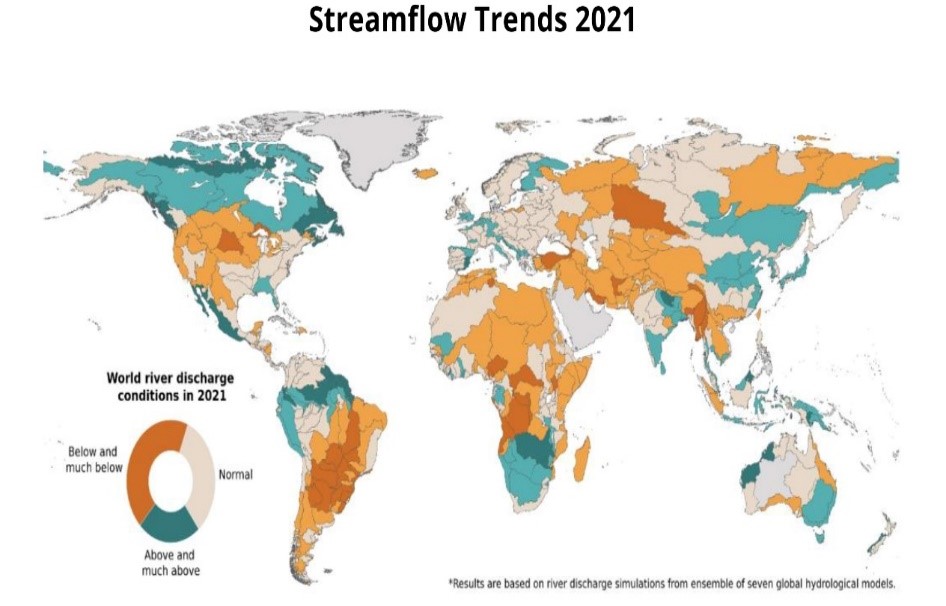PREVIOUS
State of Global Water Resources 2021
December 5 , 2022
1117 days
1372
0
- The World Meteorological Organization (WMO) recently released its first State of Global Water Resources Report.
- It aims to assess the impact of environmental, climatic and social changes on the world’s water resources.
- Its objective is to support the monitoring and effective management of freshwater resources across the world at a time when the demand is high and supply is very limited.
- In 2021, rivers in Africa like Niger, Volta, Nile and Congo experienced less than normal discharge.
- Rivers in several parts of Russia, West Siberia and Central Asia also experienced lower-than-average discharge during the same period.
- Major flood events occurred in China, north India, western Europe.
- Countries affected by Tropical cyclones are like Mozambique, the Philippines and Indonesia.
- Countries like Ethiopia, Kenya and Somalia have experienced several consecutive years of below-average rainfall
- In 2021, places like the US’ west coast, central part of South America and Patagonia, North Africa and Madagascar, Central Asia and the Middle East, Pakistan and North India had below-normal terrestrial water storage.
- In the long term, several places are expected to experience a negative trend in terrestrial water storage.
- These include Rio Sao Francisco basin in Brazil, Patagonia, the Ganges and Indus headwaters and the south-western US.
- The negative trends are stronger than the positive ones.

Leave a Reply
Your Comment is awaiting moderation.


